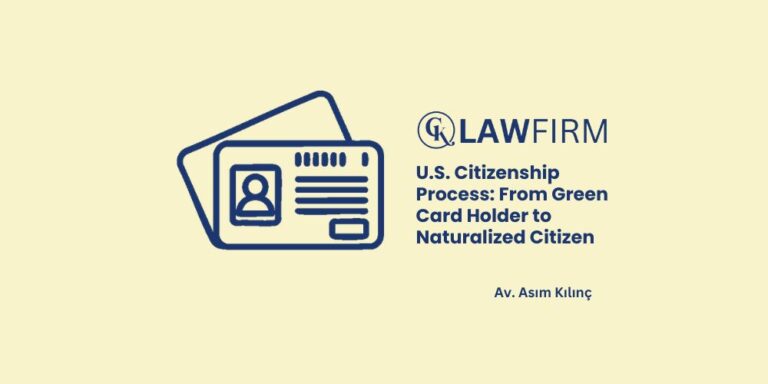Schedule an Appointment with Our Attorneys Now

Understanding Asylum and Refugee Status
Understand the asylum and refugee status process: eligibility criteria, application steps, rights, and benefits explained in detail.
By Asim Kilinc, Immigration Attorney at CK Law Firm
Seeking asylum or refugee status in the United States is a complex but critical process for individuals fleeing persecution and danger in their home countries. As an experienced immigration attorney, I’ve helped many clients navigate these challenging pathways to safety and freedom. This detailed guide will provide an overview of the asylum and refugee application processes, including eligibility criteria and the rights afforded to those granted protection.
What is Asylum and Refugee Status?
Asylum and refugee status are forms of protection granted to individuals who have been persecuted or fear persecution due to race, religion, nationality, membership in a particular social group, or political opinion.
- Asylum: Granted to individuals already in the U.S. or arriving at a U.S. port of entry.
- Refugee Status: Granted to individuals outside the U.S. who are referred to the U.S. Refugee Admissions Program (USRAP) by the United Nations High Commissioner for Refugees (UNHCR), a U.S. embassy, or a designated non-governmental organization.
Eligibility Criteria
1. Well-Founded Fear of Persecution
- You must demonstrate a credible fear of persecution in your home country based on race, religion, nationality, membership in a particular social group, or political opinion.
2. Presence in the U.S. (Asylum)
- You must be physically present in the U.S. or at a port of entry to apply for asylum.
3. Application Deadline (Asylum)
- You must apply for asylum within one year of your arrival in the U.S. unless you can show changed circumstances that affect your eligibility or extraordinary circumstances that prevented you from applying on time.
4. No Protection from Another Country
- You must not have been firmly resettled in another country before coming to the U.S.
Application Processes
Applying for Asylum
Step 1: File Form I-589
- Form I-589: Application for Asylum and for Withholding of Removal. No fee is required.
- Supporting Documents: Provide evidence to support your claim, including personal statements, affidavits, and documentation of persecution.
Step 2: Biometrics Appointment
- Biometrics: You will receive a notice to attend a biometrics appointment where your fingerprints and photograph will be taken.
Step 3: Asylum Interview
- Interview: You will be scheduled for an interview with a USCIS asylum officer. Be prepared to discuss your case in detail and provide any additional evidence.
Step 4: Decision
- Outcome: The asylum officer will make a decision on your case. If granted, you will receive asylum status. If not, your case may be referred to an immigration judge for further review.
Example: My client, Sara, fled her home country due to religious persecution. We carefully prepared her Form I-589, gathering detailed statements and evidence. During her asylum interview, she was able to clearly explain her fears and experiences, leading to a successful outcome.
Applying for Refugee Status
Step 1: Referral to USRAP
- Referral: You must be referred to the U.S. Refugee Admissions Program (USRAP) by the UNHCR, a U.S. embassy, or a designated NGO.
Step 2: Refugee Interview
- Interview: You will be interviewed by a USCIS officer to determine your eligibility for refugee status.
Step 3: Medical Examination
- Medical Check: Undergo a medical examination to ensure you meet health requirements.
Step 4: Approval and Resettlement
- Resettlement: If approved, you will be resettled in the U.S. with the help of resettlement agencies that assist with housing, employment, and other integration services.
Example: Ahmed, a political activist, was referred to USRAP by the UNHCR after fleeing persecution. His detailed interview with the USCIS officer and medical clearance led to his successful resettlement in the U.S., where he now lives safely.
Rights and Benefits of Asylum and Refugee Status
1. Protection from Return
- Asylees and refugees are protected from being returned to a country where they face persecution.
2. Work Authorization
- Employment Authorization Document (EAD): Asylees and refugees are eligible to apply for an EAD, allowing them to work in the U.S.
3. Access to Social Services
- Benefits: Asylees and refugees may be eligible for certain social services, including health care, housing assistance, and education programs.
4. Path to Permanent Residency and Citizenship
- Green Card: After one year, asylees and refugees can apply for a Green Card (permanent residency).
- Citizenship: After five years as a Green Card holder, they can apply for U.S. citizenship.
Example: Maria, granted asylum, received her EAD and accessed healthcare services through local programs. After a year, we helped her apply for her Green Card, and she is now on her way to becoming a U.S. citizen.
Challenges and Tips for Success
1. Gathering Evidence
- Tip: Collect as much documentation as possible to support your claim, including witness statements, news articles, and medical records.
2. Legal Assistance
- Tip: Seek the help of an experienced immigration attorney who can guide you through the process and represent you in interviews or hearings.
3. Consistency in Testimony
- Tip: Ensure that your statements and documentation are consistent and truthful. Inconsistencies can harm your credibility.
Example: Hassan, a client facing persecution, faced difficulties in gathering evidence. We worked together to obtain statements from family and community members, ultimately strengthening his case and leading to a successful asylum application.
Conclusion
Understanding and navigating the asylum and refugee application processes can be daunting, but with the right preparation and support, you can successfully achieve protection in the United States. At CK Law Firm, we are dedicated to helping you through every step of this journey. Contact us today for expert legal advice and personalized assistance.





